What Are Drywood Termites
With our warm and sunny climate, drywood termite infestations can happen any time throughout the year. Drywood termites get their name because they infest dry, exposed wood, unlike subterranean termites, which need a connection to the soil. Drywood termites commonly infest attics, window frames, eaves, decks, trees and wooden fences.
Drywood termites form colonies of up to 2,500 members. Unlike subterranean termite species, drywood termite colonies do not have a worker caste. The work is done by immature termites before they reach adulthood. These termites bore through wood, leaving holes to “kick out” waste material and fecal matter. These small holes are called kick-out holes. The waste material and fecal matter combined form pellets and are often found near the site of kick-out holes. Each year, drywood termites leave their nests and fly to new locations. This process is called swarming and it often takes place between August - October. Keep an eye out for signs of termite activty like kick-out holes, dust piles or wing-sheds during that time period.
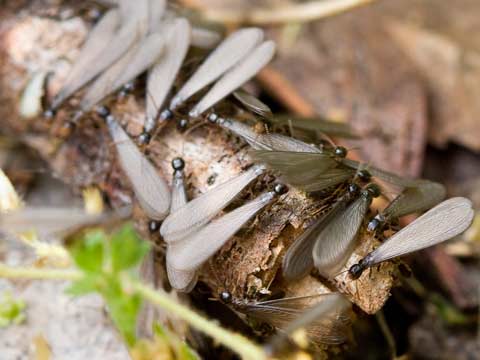
Signs of a Drywood Termite Infestation
Drywood termites infest structures by exploiting exisitng cracks and openings in the structure. Drywood termites typically enter through attic or foundation vents, through or under wood shingles, under eaves and fascia boards, and through natural cracks, checks and joints in exposed wood trim, window and door frames and sills. Drywood termite nest deep inside wood, taking very little time to infest a structure. They are often difficult to detect until they have become established. Drywood termites are only visible during swarming season or when kick out holes and fecal pellets are present. They require immediate intervention to prevent structural failure.
Only a state licensed termite inspector can determine if your property has drywood termites, but it’s time to call us if you see the following signs:
- Discarded wings
- Kick out holes
- Wood shaving piles
- Termite droppings / frass
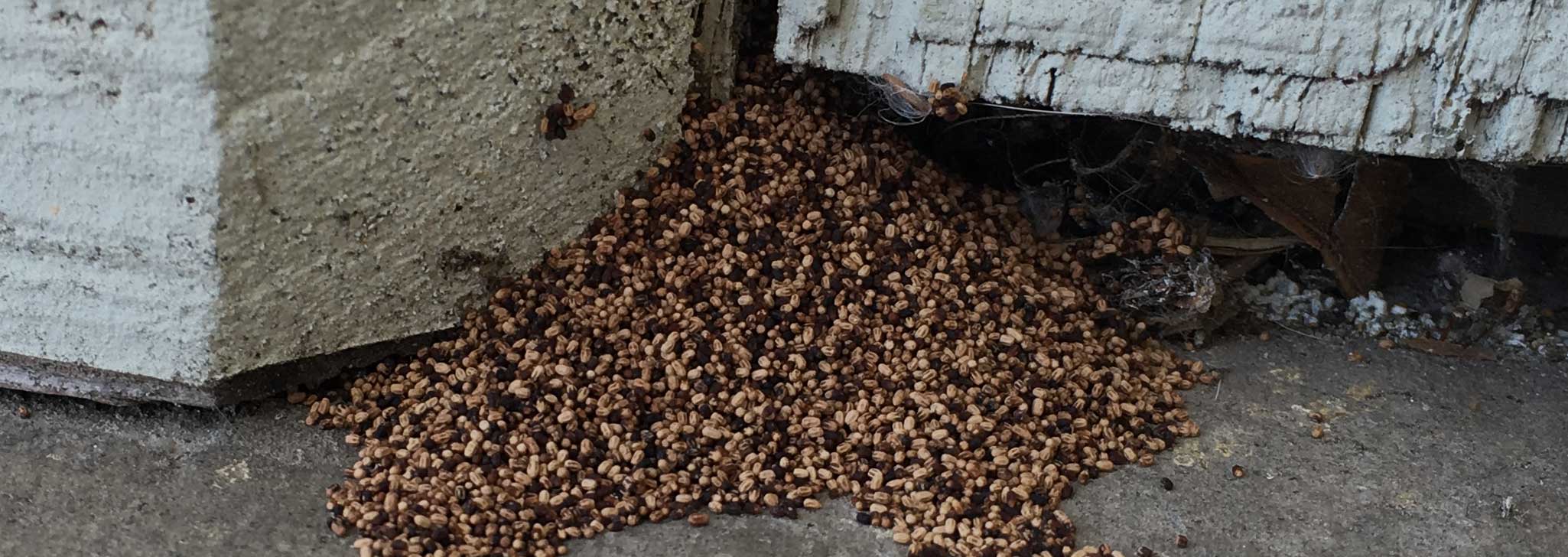
Termite Inspection Reports
If you’re getting ready to buy or sell a property in San Diego, you will need a full termite inspection report. Our licensed termite inspectors will come to your property and thoroughly investigate the structure for termite damage and signs of infestation. Once that is complete, our technicians will provide the report to the buyer and/or seller. We provide home inspections and commercial real estate inspections.
Drywood Termite Treatment Options
All termite control methods can be categorized as either whole-structure or localized. A whole-structure treatment is defined as the simultaneous treatment of all infestations, accessible and inaccessible, in a structure. A localized or spot treatment is more restrictive, often applied to a single board or small group of boards. Homeowners are advised to know the distinction between whole-structure and spot treatments when deciding which method to select because all treatment methods are not equivalent.
Drywood Termite Fumigation
Whole-structure treatments have an advantage over spot treatments in that they can eliminate all infestations, even hidden ones. With the uncertainty of current detection methods, particularly when drywall or other wall coverings conceal infestations, there is always some doubt as to the extent of drywood termite colony boundaries within homes. Consequently one can never be sure that all infestations have been treated when applying spot treatments. Whole structure fumigation is the only method in which all drywood termites are killed.
Drywood Termite Local Treatment
If drywood termites are found during your termite inspection, fumigation may not be necessary. In these cases, we offer localized spot treatment for drywood termites. Depending on accessibility, local spot treatments are effective at eradicating isolated termite infestations. Secondary spot treatment is a perfect option for homes and business which have been fumigated within the past five years. Local treatments are also great for commercial buildings and apartment complexes, where relocating multiple residents may not be feasible. We also offer an annual service plan for secondary treatments that provide continual protection against future infestations.
Non-repellent, transferable termiticides allow termites to penetrate treated areas where they contact the active termiticide. The termiticide is then carried on the termite’s body into the colony, spreading to other termites like a virus. Borate treatments and foaming penetrants soak into the wood members and leave behind residual termiticides, killing the termites. If you are interested in tent-less termite control, our termite inspection specialists will be more than happy to explain secondary treatments for your structure.
Termidor & Other Non-Repellent Treatments
Termidor is made from a revolutionary new non-repellent or "undetectable" chemical technology treatment. That means termites cannot see, smell, taste or avoid Termidor. Non-repellent termiticides stop termite feeding within hours of exposure. The first termites to come into contact with the treatment are exposed through contact and ingestion and carry it to the colony on their bodies to affect other unexposed termites. Delayed toxicity means exposed termites that have stopped feeding can still walk, groom and aggregate in groups for an extended period of time, allowing treatment to further spread among colony members. Non-repellent termiticies controls termites in less than three months and provides long-lasting residual structural protection.
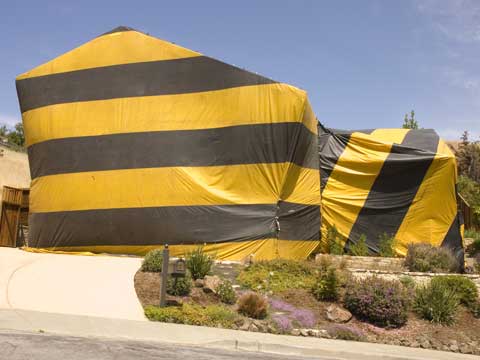
Fumigation
During fumigation, the building is tented for 24-48 hours. Vikane gas is then pumped into the sealed structure, replacing the oxygen. Vikane penetrates hard to reach areas like walls voids, attic spaces, eaves and door frames. After treatment, our technicians will remove the tent and air out the structure. We will thoroughly inspect the structure before we allow occupants to return. Fumigation service is warrantied for 3 years after service.
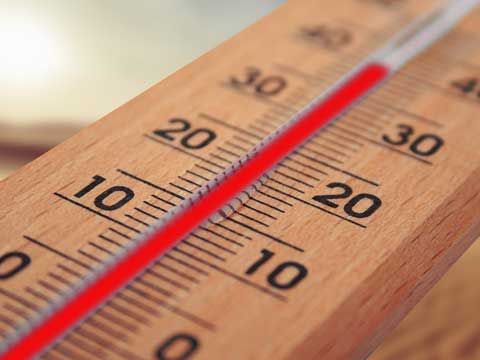
Heat Treatment
Heat is a relatively new treatment option for termites. Much like fumigation, heat will penetrate areas of the structure that cannot be reached by traditional pesticide applications. Heat treatments can be completed in a matter of hours and do not require occupants to be out of the house for more than an afternoon.
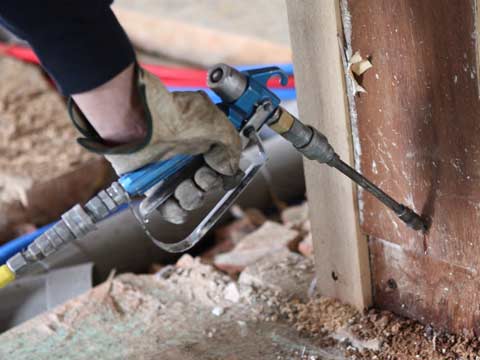
Local Treatment
Local treatment is a great option for small scale infestations or smaller budgets. After a thorough inspection is completed, our technicians may recommend localized spot treatment based on their findings. You will not need to leave the house for this treatment and prep, if any, will be minimal.
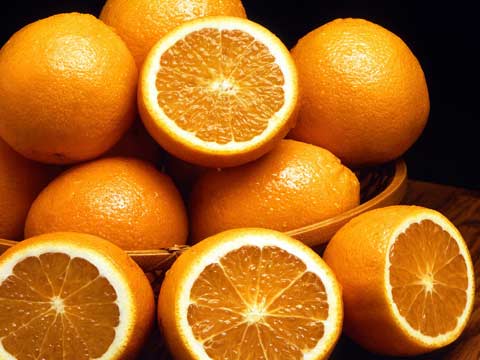
Orange Oil
Orange oil is a non-traditional treatment option used to rid exposed wood structures of termites. It works by injecting the product into the wood structures. Orange oil destroys termites and their eggs quickly and without using traditional pesticide methods like fumigation. Service time is quick and easy and doesn’t require you to be out of the home during treatment.
Termite Wood Damage & Structural Defects
Natural forces like earthquakes and tornadoes can cause a wake of destruction. Fortunately, they have taught us something about the kind of home they are most likely to damage. It turns out that strong forces “pick on” homes and buildings that have structural defects. Homes that are well built and maintained are more likely to come through a major calamity in much better shape.
A structural defect can be the result of a design or construction flaw and makes your home weaker. Weakening can also be caused by anything that attacks the structural wood. This includes beetles, fungi, termites and carpenter ants. Unchecked, these pests can reduce the strength of wood by as much as 80%, leaving your home susceptible to widespread damage. The stronger the force, the more likely that force will cause severe, and perhaps irreparable, damage to the home.
The porch column that has a masonry exterior can conceal termite- damaged wood inside. The column could break during an earthquake. Had the wood been intact, the column may very well have come through unharmed. Be vigilant in keeping your home in good repair and free of wood-destroying pests. Don’t hesitate to have inaccessible areas opened so they can be inspected for hidden damage.
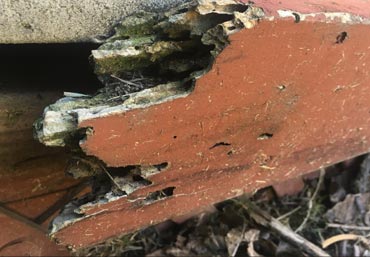
Termite Trouble Spots
Any structure with wood looks and smells like a big juicy steak to termites. These pests have an uncanny ability to locate wood both by smell and by random searching, even when dirt, cement, or stucco hides the wood. There are certain situations that encourage problems with termites. Here are some common termite trouble spots:
- Cracks in concrete foundations and foundation walls allow termites hidden access to wood.
- Soil in contact with wood allows termites easy access. This includes posts set in the ground, soil pushed up against the wood in a structure, concrete porches filled with soil that rests against wood structural members, wooden porch steps that rest on soil, etc. Do-it-yourselfers often erect wooden trellises or fences with posts directly in the ground, and then connect these to the house.
- Unsolved moisture problems like poor grading that directs water toward a structure, dripping faucets, and leaking pipes all attract termites, which need moisture to survive. Shrubbery or vines that block the airflow through ventilation openings also cause problems.
- Extra wood like tree stumps and large dead roots, buried form boards, wood chip mulching, and firewood stacked on the ground attracts termites. The pests get started in these, then find their way into a structure.
These are just some of the many, many situations that can lead to trouble with termites. A professional termite inspection can spot these and other, less obvious conditions that can lead to problems with various wood-damaging pests.
Guaranteed Results
Both the inside and outside of your home are always under warranty. We guarantee your satisfaction between regular scheduled maintenance services. If ants should show up between services please give us a call and our protection plan offers our customers peace of mind knowing they can call us given an unforeseen invasion.
Email Us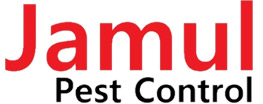
10793 Jamacha Blvd Suite 101, Spring Valley, CA 91978
Call Us Today! (619) 800-7022